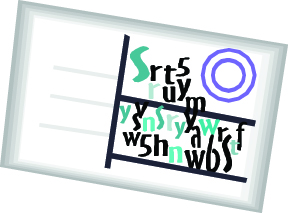 “Print is still the most portable medium for most people, and it’s the preferred way to read large documents (three or four pages and up). Print also gives you total control over the look and feel of your message, which is extremely important when image is a critical component of your program.” Don Sadler / BrainTrust
“Print is still the most portable medium for most people, and it’s the preferred way to read large documents (three or four pages and up). Print also gives you total control over the look and feel of your message, which is extremely important when image is a critical component of your program.” Don Sadler / BrainTrust
One of the oldest and most effective ways to stay in touch with your existing customers, prospects, and members is with printed newsletters. Arriving by snail mail, they contain valuable, information-rich content and are an effective complement to online promotions. They also serve niche markets where print is a preferred format. Due to the decrease in postal mail, print newsletters stand out, unlike online newsletters that tend to get lost in email boxes.
Many businesses understand the value of direct mail as a marketing tool. But have you ever considered the value of a newsletter as a sales-related publication? A newsletter can help your business or non-profit organization generate new business or increase membership, cultivate customer and member loyalty, increase repeat sales or continued giving, and boost referrals.
How can a newsletter accomplish all these objectives? By communicating useful information in an easy-tounderstand format. And when we say useful information, we mean not only facts, tips, and expert advice, but also new product or service information.

 The time to begin an article is when you have finished it to your satisfaction. By that time you begin to clearly and logically perceive what it is you really want to say.
The time to begin an article is when you have finished it to your satisfaction. By that time you begin to clearly and logically perceive what it is you really want to say. “Postcards are the simplest, most cost-effective format available. They’re an excellent choice for making an announcement or driving customers to a store, website, or event.”
“Postcards are the simplest, most cost-effective format available. They’re an excellent choice for making an announcement or driving customers to a store, website, or event.”





